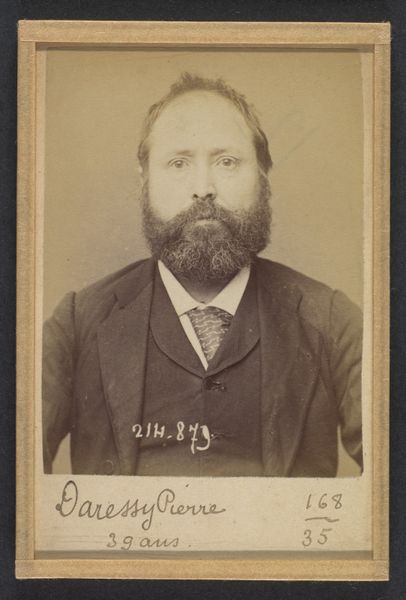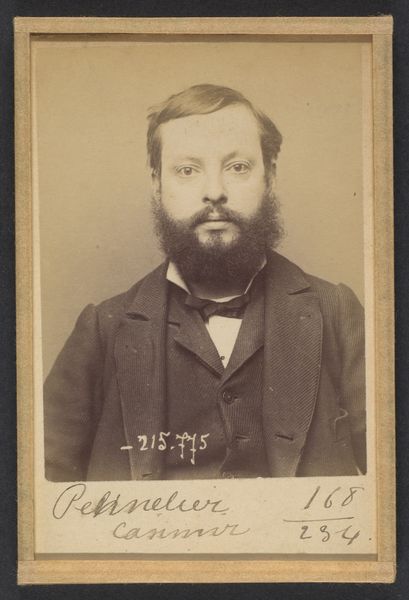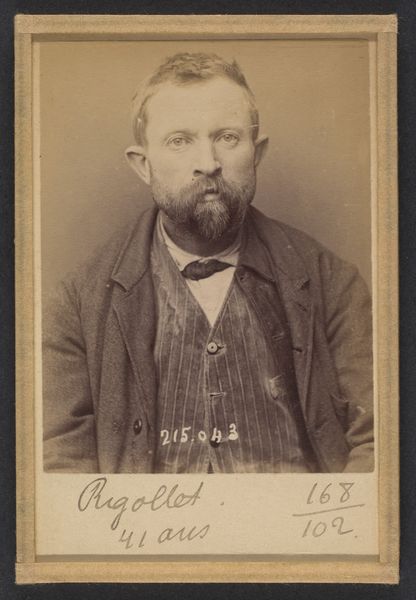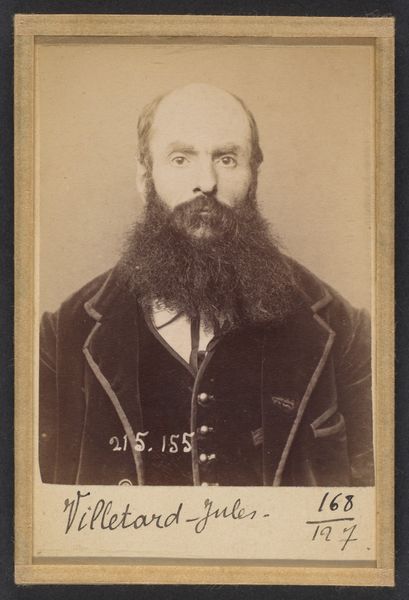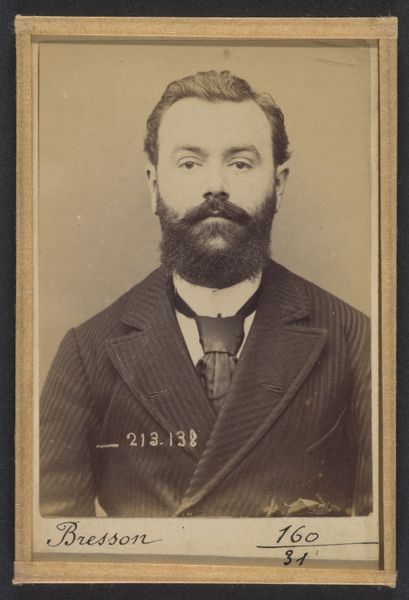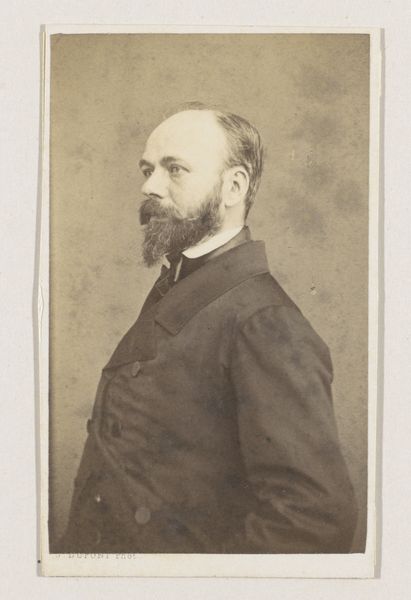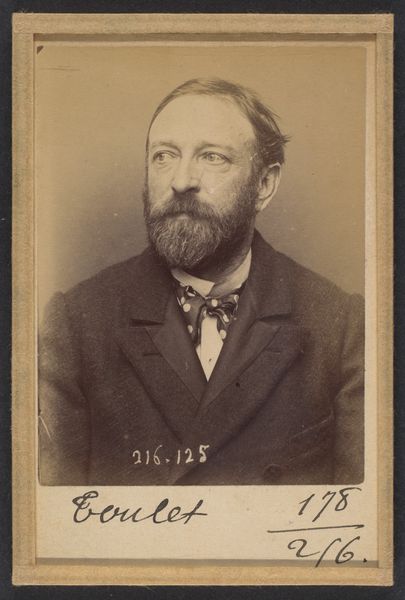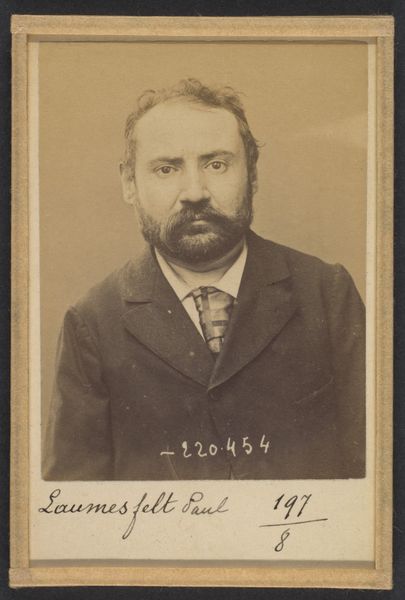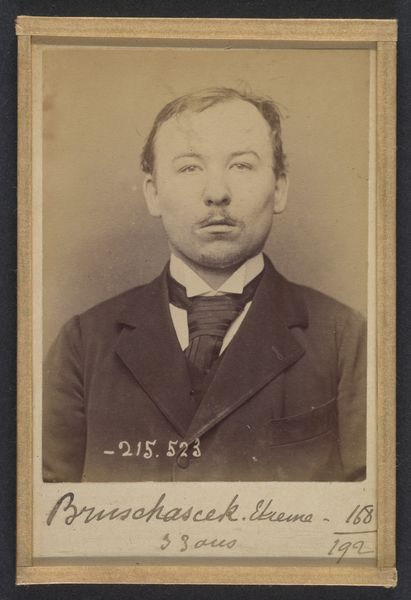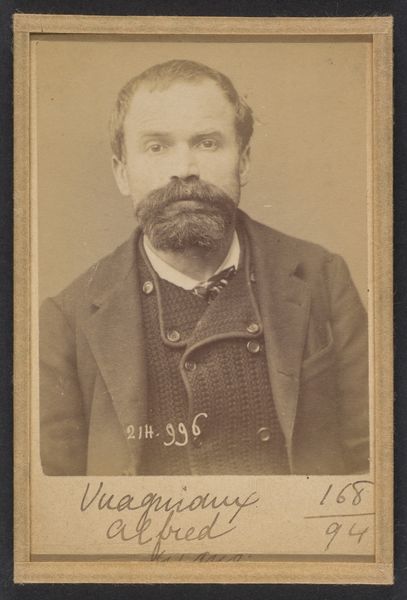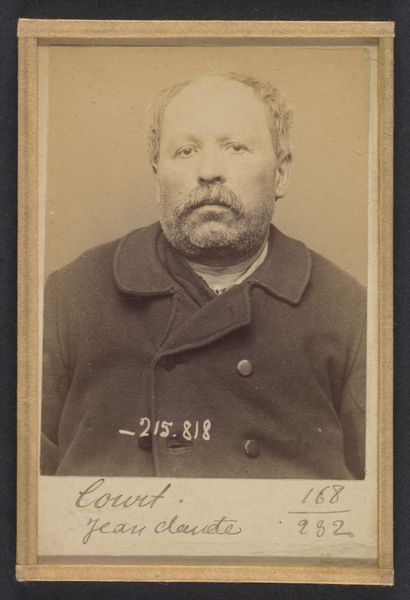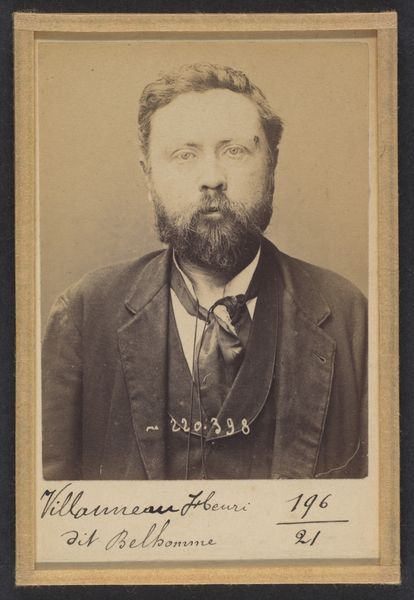
Couchot. Jean. 49 ans, né à Bidache (Basses-Pyrénées). Tailleurs d'habits. Anarchiste. 23/3/94. 1894
0:00
0:00
daguerreotype, photography
#
portrait
#
daguerreotype
#
photography
#
historical photography
#
19th century
#
men
#
fine art portrait
#
poster
Dimensions: 10.5 x 7 x 0.5 cm (4 1/8 x 2 3/4 x 3/16 in.) each
Copyright: Public Domain
Curator: Here we have an albumen print from 1894 by Alphonse Bertillon. The work is entitled "Couchot. Jean. 49 ans, né à Bidache (Basses-Pyrénées). Tailleurs d'habits. Anarchiste. 23/3/94." Editor: The tonality immediately strikes me. The sepia tones give it a profound sense of age, while the direct gaze creates a strange intimacy. Curator: Intimacy within constraint, perhaps. Bertillon was, of course, the father of the modern mugshot. This piece is less a portrait and more a formalized typology. Note the inscription; each detail is a record. Editor: Absolutely. The inscribed text below, with its clinical details—age, birthplace, profession, even political affiliation—transforms the sitter into a subject, almost an artifact. Is there a deeper statement about societal control embedded here? Curator: I find myself drawn to the composition. It is meticulously balanced; the man's head and torso are centered. Even the soft focus seems calculated to reduce any aesthetic "noise." Editor: And the symbolic weight! Anarchists carried a specific cultural valence in the late 19th century—figures of chaos and disruption to the established order. Bertillon’s image aims, I suspect, to categorize and neutralize that threat. Curator: Look, too, at the stark materiality of the image itself: the paper texture, the way it's mounted. Bertillon is saying something about precision, about objective "truth." Every choice amplifies that reading. Editor: It makes me consider the enduring power of the human face and the information it transmits even under clinical, almost dehumanizing, conditions. His clothing, even, speaks of the era's aesthetic. Curator: Indeed. The soft fall of light draws attention to his dignified bearing, contradicting, perhaps, the intended reading of his identity as dangerous or transgressive. The jacket itself suggests order, not rebellion. Editor: So we're left with a fascinating tension between intent and outcome, structure and symbol, artistry and social context. Curator: Precisely, it's that tension that makes Bertillon's portrait both compelling and deeply unsettling. Editor: I'll leave today rethinking photographic portraiture itself as something political and deeply subjective.
Comments
No comments
Be the first to comment and join the conversation on the ultimate creative platform.
